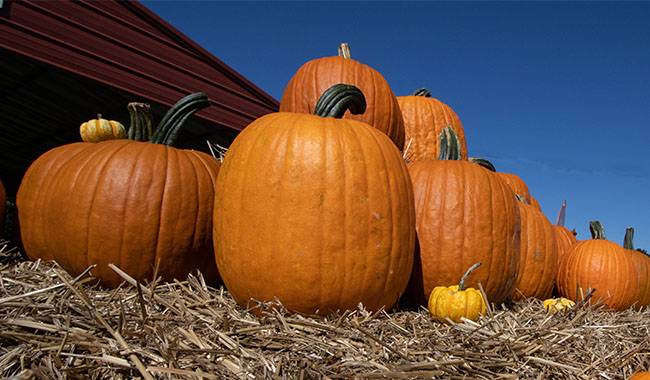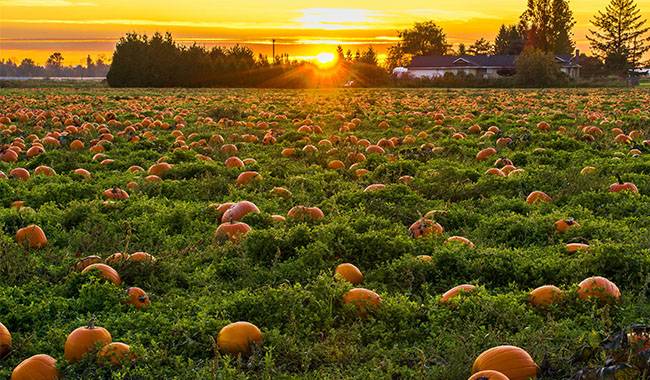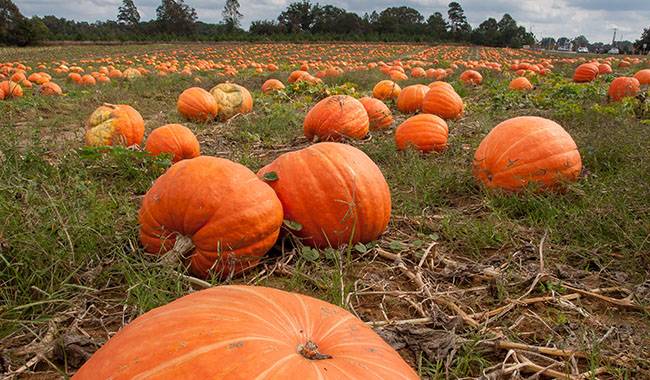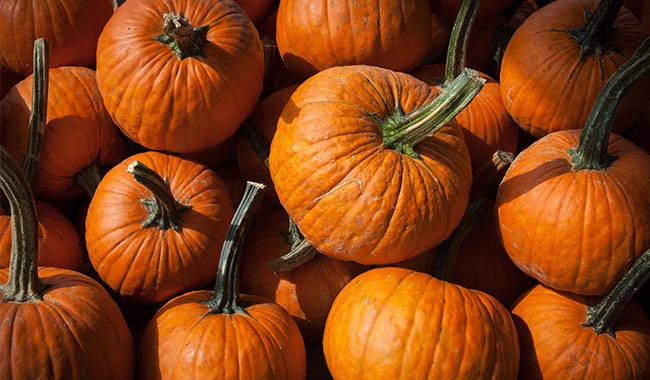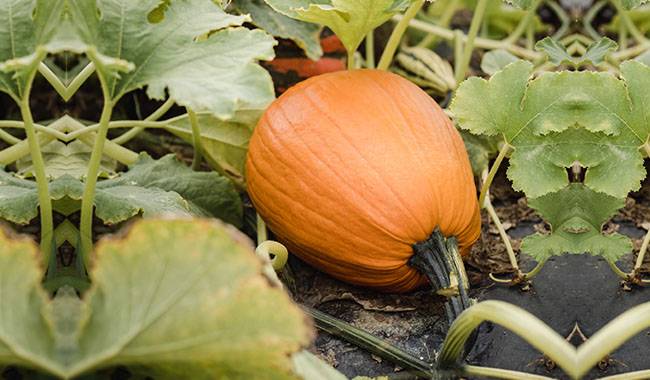
The pumpkin is a vegetable crop with the largest fruit known to our gardeners. This sunny fruit is called the pumpkin and has only come to the United States relatively recently in the last century. The home of the pumpkin is thought to be Mexico – a country rich in sunny heat. In less than two centuries, this vegetable crop has taken its rightful place at the table of gourmets, and not just in the southern part of the United States.
More than 100 regions of the United States are engaged in industrial growing pumpkins. Rarely is there a big summer without 1-3 bushes of this favorite vegetable crop growing in a sunny meadow. But it often happens that pumpkin is grown successfully in the region, but only its asexual propagules grow on your plot. Pumpkin crop does not form or small ugly fruits and ovaries rotting in the roots.
To solve this problem, you need to pay attention to the following issues.
- Biological characteristics of the crop.
- The requirements of the crop adapted to the soil and climatic conditions.
- Compliance with the requirements of cultivation techniques.
REASONS FOR THE ABSENCE OF PUMPKIN OVARIES
Pumpkins have large above-ground parts and large fruits that require fertile soil, rich in humus and with good permeability. However, in heavy soils and when over-fertilized, pumpkins develop fat plants that are not conducive to the formation of their fruits. Too long canopy stems and huge leaves carry away a lot of nutrients, and the shade of spreading vegetation masses is so thick that the ovaries lack sunlight. The best place to put pumpkins is in a place where no fertilizer, especially organic fertilizer, has been applied for the previous 1-2 years.
Under natural conditions, when there is a lack of nutrients, pumpkins will form additional root systems in the stems. If pumpkins in the garden are planted in poor soil (with light-colored leaves and relatively small leaf discs), it is practical to cover the stems with soil: the plant will form additional root systems and restore its nutrient system on its own.
Pumpkin is not shaded tolerant. For proper growth and development, it needs a sunny open place, ventilated, but without winds that damage the leaves. In shady places where light is lacking, pumpkins form sterile pollen. If water gets on the stigma of the pistil, pollination does not occur.
Pumpkin is a crop pollinated by insects. One of the biological characteristics of pumpkins is that they need to pollinate the female flowers within 1-2 days. If pollination fails (cold, wet weather, lack of pollinators, etc.), the ovary will rot and fall off. Pollination works best if it is done on the first day of the opening of the female flowers.
If a pumpkin is not properly pollinated, it may produce ugly fruits that take nutrients away from the normally developing stem and fruit. These fruits should be excised. To prevent them, thin out excessive foliage at the beginning of germination and pumpkin flowering to allow the flowers access to pollinators and sunlight. Gently remove the leaves with shears without cutting or breaking them. Leave no more than 1-3 cotyledons on the branch.
If the roots are damaged when planting the seedlings and start to rot, the pumpkins will not form ovaries. Therefore, it is better to buy seedlings in peat-grown pots and not to traumatize the root system when transplanting them into the open well.
Pumpkins do not tolerate nitrogen fertilizers in weather that is not warm enough. Soil temperatures should be at least 55-59°F (13-15°C). With early nitrogen fertilizer applications, cultures become less resistant to cold temperatures and become diseased.
HOW TO GET PUMPKINS TO FLOWER AND BEAR FRUIT?
If there are no ovaries on the pumpkin when all the agricultural technical requirements are met, the following measures should be taken.
You should not plant pumpkins in the lowlands, where the cold weather lasts for a long time, and the soil is not warm enough. In this case, you can prepare a warm bed from autumn if the groundwater is very close – a raised bed. Seeds should be sown within a stable air temperature of 59-64°F (15-18°C) and a soil temperature of 57-60°F (14-16°C). Pumpkins readily tolerate the heat of 77-86°F (25-30°C). It will flower and fruit in the shade only under bright sun and hot weather conditions.
In unsuitable soil conditions, some gardeners recommend planting pumpkins in a cut bucket filled with the necessary quality substrate. In this case, the root system isolated from the heavy, cold, poor soil will provide the necessary soil conditions for the plant.
Forming a huge above-ground block, pumpkins do not tolerate overgrowth. Therefore, when 2-3 seeds are sown and germinated, the strongest seedlings are usually left, and the rest are pulled off with seconds at the most ground level.
After pollination is completed, a pruning procedure is usually performed at the stage of gourd germination. In large-fruited pumpkin varieties with 1-2 ovaries on each stem, no more than 3 stems are left. The rest are removed. Fruit-bearing pumpkins are left with 4-5 leaves after the last ovary. The rest of the leaves were pruned. In the medium- and small-fruited pumpkin varieties, the stems that have been vacated are usually removed (around the beginning of August). A maximum of three to four leaves should be left behind the last fruit on each gourd.
Pumpkin is a light crop and needs plenty of light. From seedling emergence to 4-5 true leaves, a minimum of 9-10 hours of full light per day is required to promote female flower formation.
As buds and flowers emerge, light hours should last at least 10-12 hours. If the ovary does not form under otherwise positive conditions, then you need to pay attention to the planting material. When planting, you should choose varieties that are adapted to the local weather and light regime.
To compensate for weather-related poor pollination, the self-pollination of pumpkins should be carried out. Cover the half-opened flowers with moisture. The stigma of the pistil should be dry. Male pumpkin flowers open earlier than female flowers. Collect the male flowers and remove the corolla before pollination. The next morning or that afternoon (weather permitting), remove the flower capsule from the female flower and attach the anthers to the open stigma of the pistil.
A day after self-pollination, pumpkins can be sprayed with some plant growth stimulant. The ovaries of pumpkins grow at night. Therefore, choose weather with nighttime temperatures of at least 60-64°F (16-18°C) when pollination is performed. This temperature is more easily achieved when growing pumpkins in a hotbed in cooler areas.
Pumpkins absolutely cannot tolerate cold temperatures and die at 26-30°F (-3 to -1°C). For proper growth and fruit formation, you need dry weather with air temperatures of 68-82°F (20-28°C).
At lower temperatures, cucurbits slow growth, cause disease and reduce flowering and seed formation. Therefore, in areas with cold springs, plant young squash seedlings in temporary sheds until hot weather arrives.
Growing gourds are pruned and spread out so that the foliage is exposed to as much sunlight as possible. Weeds are eliminated by surface loosening (as long as there is open space), watered, and mulched. It is best to water by making furrows under the pumpkin roots. This way, the leaves are less traumatized, and the plasticity of the fruit is increased.
Dear readers
I hope these tips will help you grow a successful crop of “sunshine fruits.” For more details on pumpkin farming techniques (planting, fertilizing, watering), its medicinal properties, nursery methods, pest and disease protection, harvesting, and storage, you can read in the list “How to grow pumpkins. Cultivation, care, varieties”.
More related information about growing pumpkins plants




